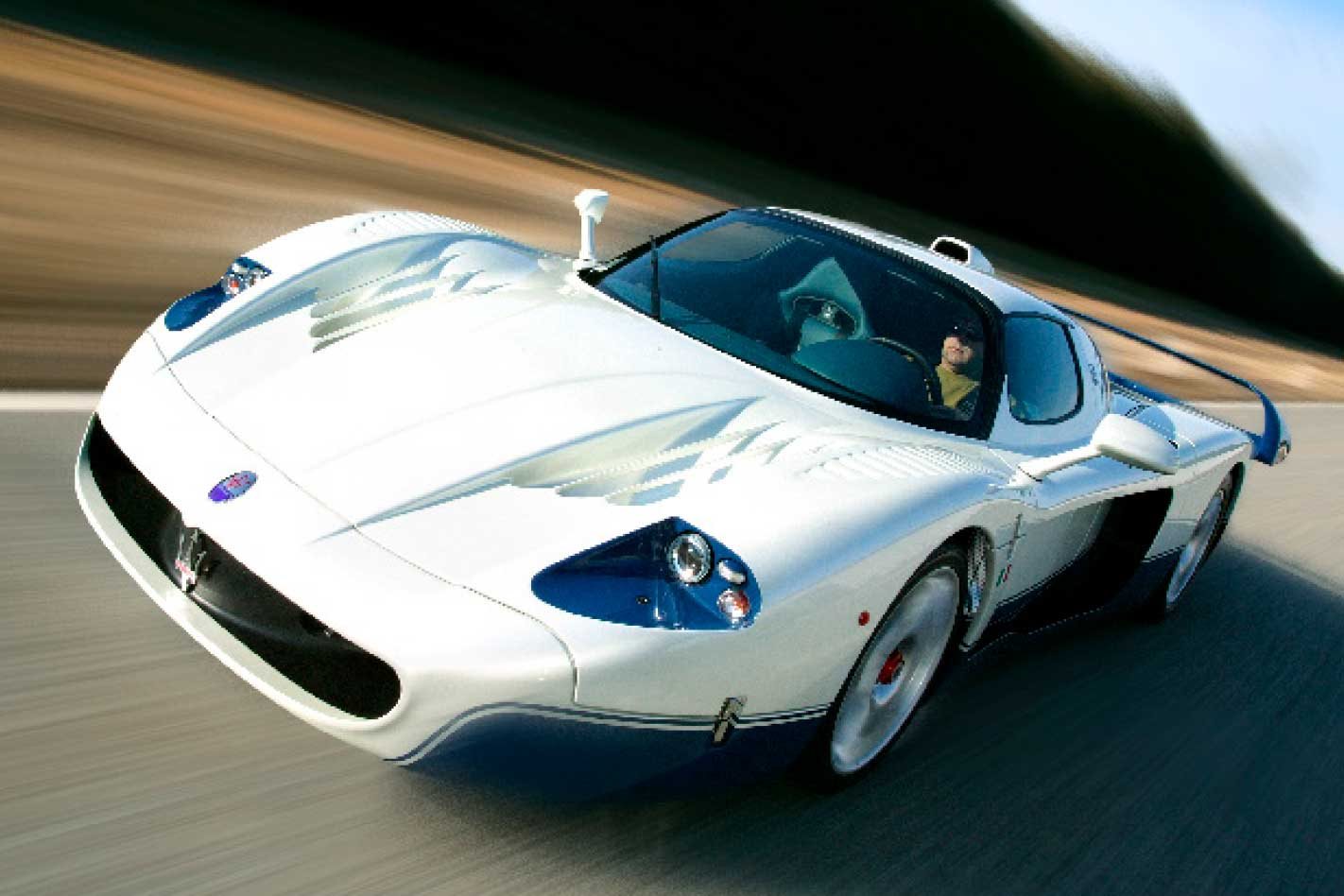Yeah, it’s an eight-kay track, but two scungy laps? I’ve got to get to grips with this awesome collection of on-paper specs in just two laps of the road course at Alfa Romeo’s Balocco proving ground. Two laps?
This feature was originally published in MOTOR’s May 2005 issue
Maserati works driver Fabrizio de Simone advises that for the sake of expediency, I should upwardly revise by about 30 percent any turn-in speed I had in mind, then guarantees the MC12 won’t bite. Sure a titanium-conrodded, fully stressed 465kW V12 race car won’t bite, even if this is one of the 50 Maserati’s built for the road. No, fair dinkum.
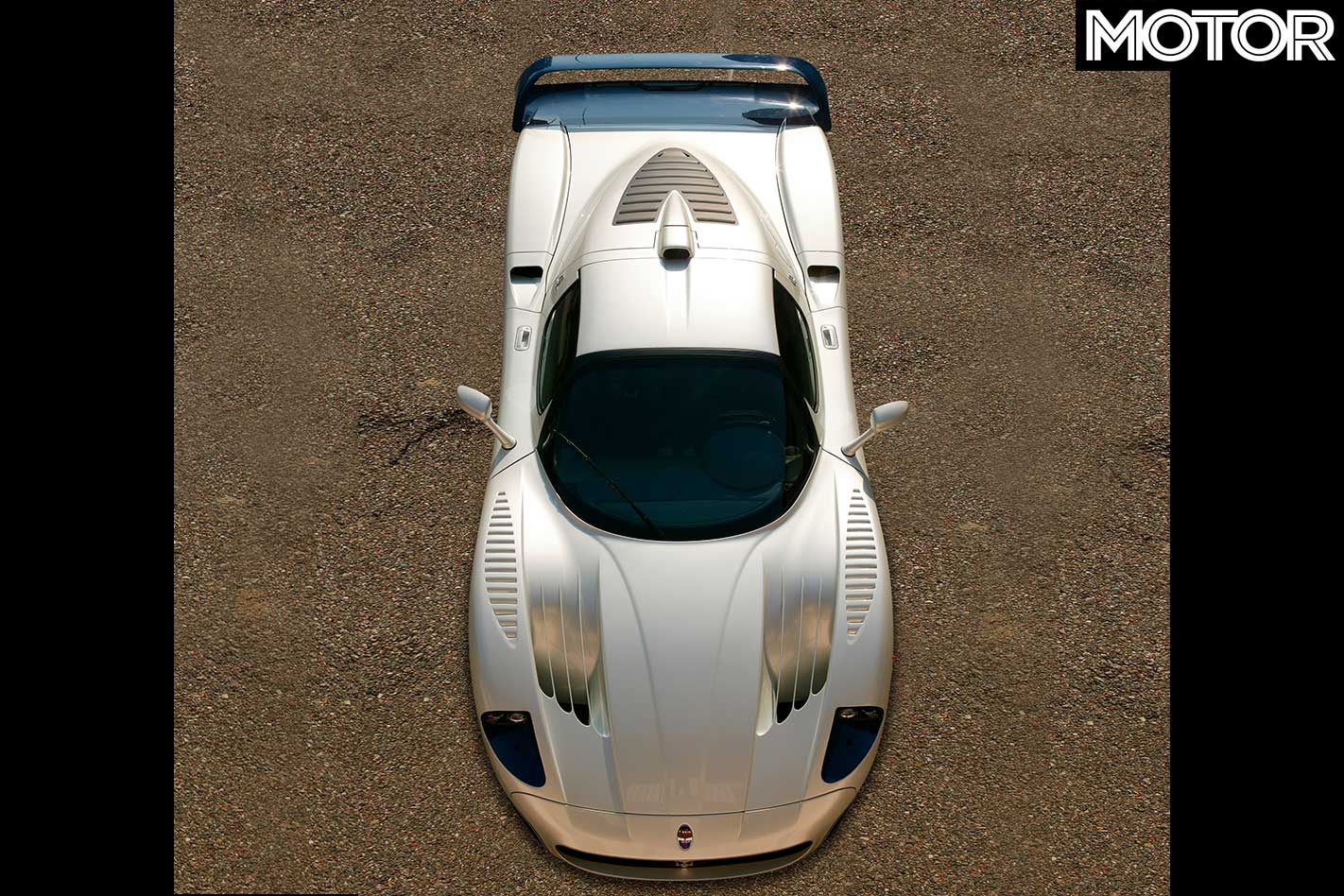
Yes, they short-cutted the MC12’s development by designing it off the Enzo, but it has come a long way from the Ferrari donor. From its simple, classy interior, to its straked-bonnet air outlets, it’s like an Enzo, yes, but it’s more mature.
The speedo runs to 360km/h, though Maserati admits the car’s top speed is closer to 330km/h. But that’s not the gauge that gets your attention. No, that’s captured by the enormous white-faced tacho sitting proudly in line with the steering column. The aluminium-faced console is similarly simple, too. A big blue start button, then lesser buttons for the hydraulic nose lifter (40mm), traction control and race mode for the gearshift.
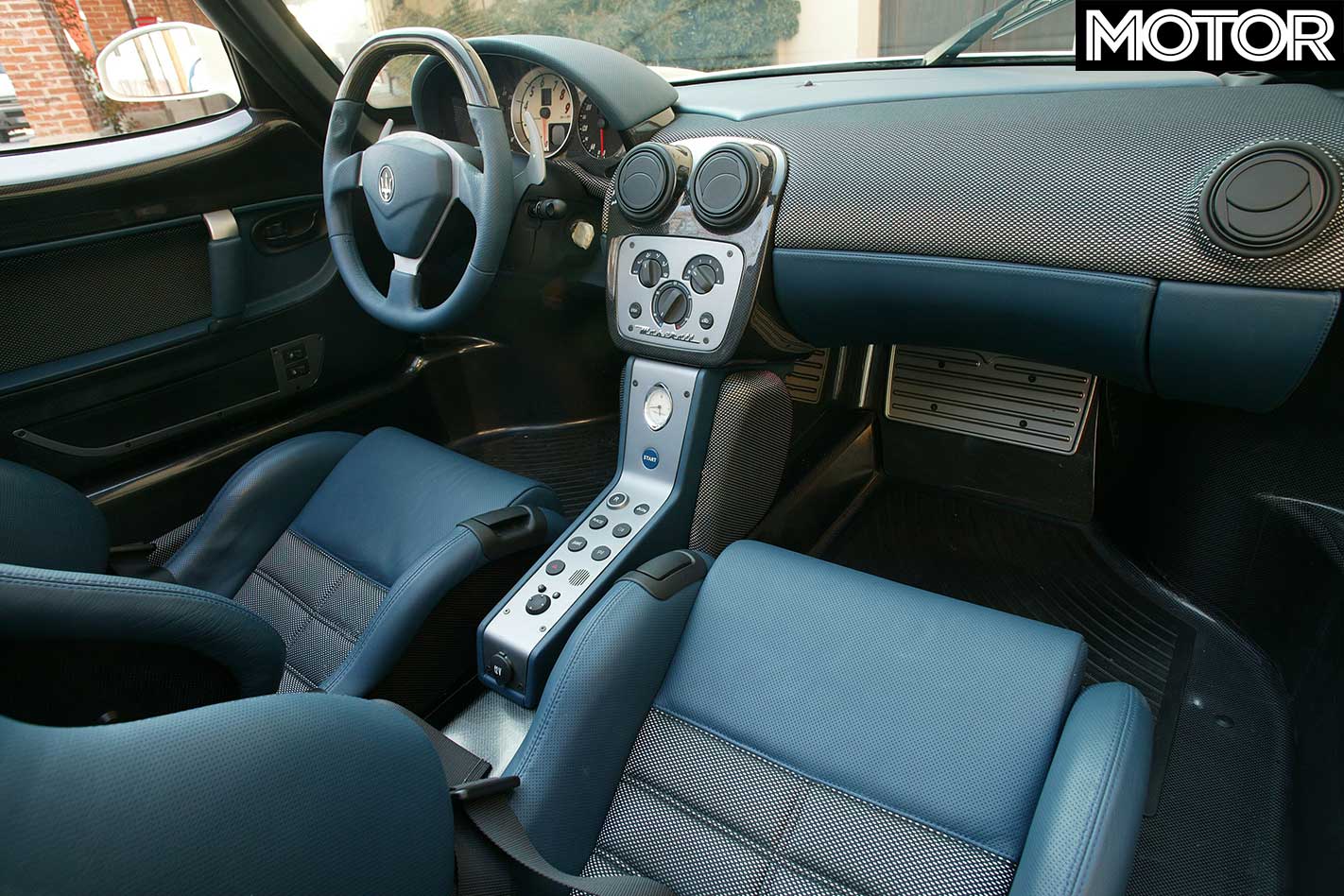
This is not a garden-variety sports car, then. This is top shelf, and it reminds you of it, for your own safety, at every nut and every bolt. It has gone beyond the supercar strata to become a genuine balls-to-the-wall Le Mans racer for the road.
Even when you’re priming the engine before you fire it, you can feel the whir of the fuel pumps and the rush of the fluid out of the 115-litre tank and into the injectors. You feel everything. Every pump, every hiss of fluid down braided lines, and every twitch of an electronically opened throttle body fizzes throughout your entire body.
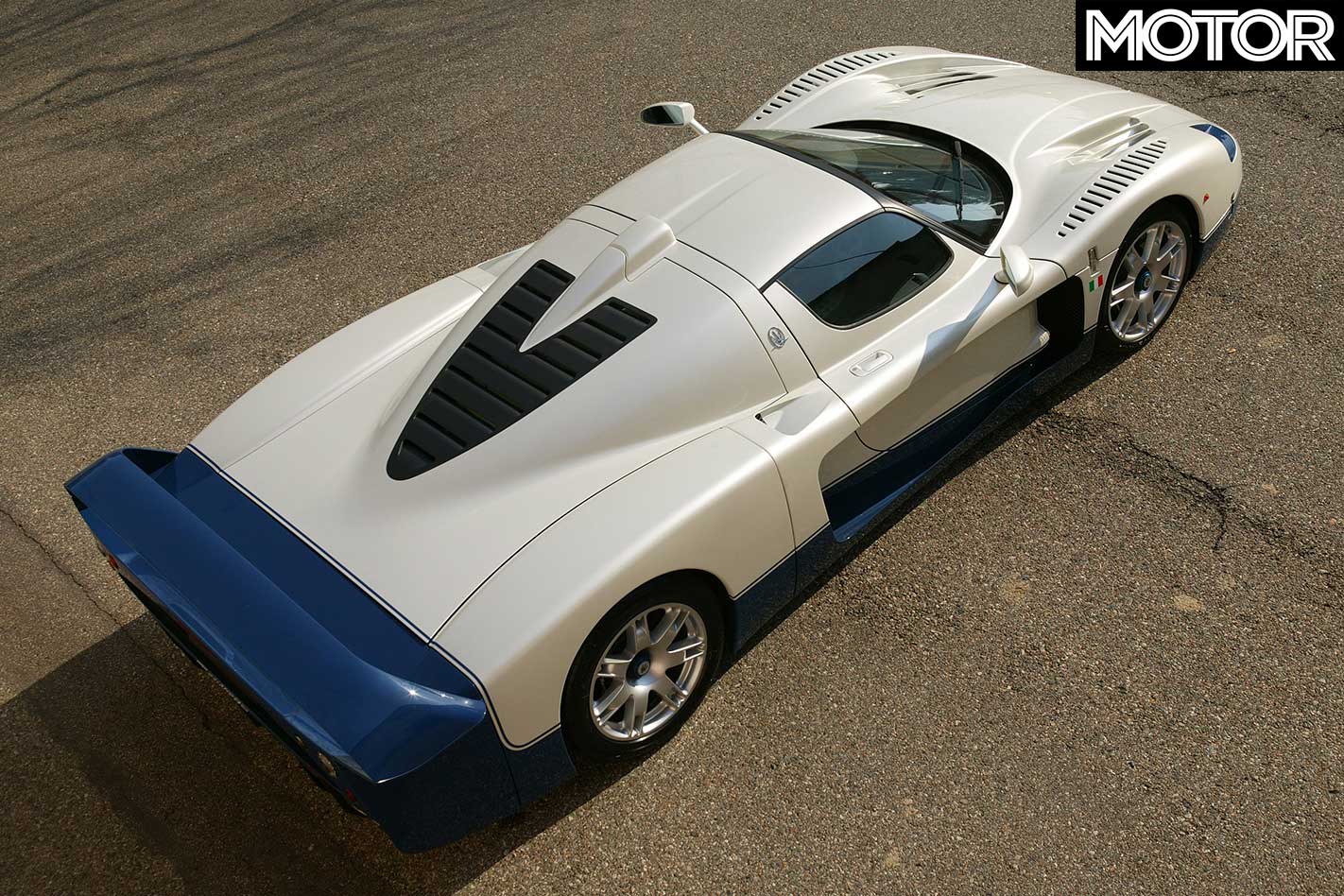
The vibrations start then, deep and noisy, at anything more than an idling throttle. The timbre picks up a harder edge and then the snarling starts, deep from within the V12’s heart.
There are no bushes censoring the V12’s NVH. The engine bolts directly to the carbon fibre/Nomex honeycomb tub in which you sit, the six-speed gearbox bolts directly to the engine, one step further back. As does the subframe to the gearbox. And the suspension to the subframe. And there’s not a single gooey bush or rubbery mounting in sight.
And yet, for all of that engineering intensity, it trickles out of the pitlane like a pussy cat. Bark the engine into life, gruff and deep, then flick first-gear on the Cambiocorsa paddle-shift and it’s happy to meander about at idle, with no slipping of the computer-controlled clutch, while you get your bearings. Nice. But then, 652Nm of torque at 5500rpm, will do that.
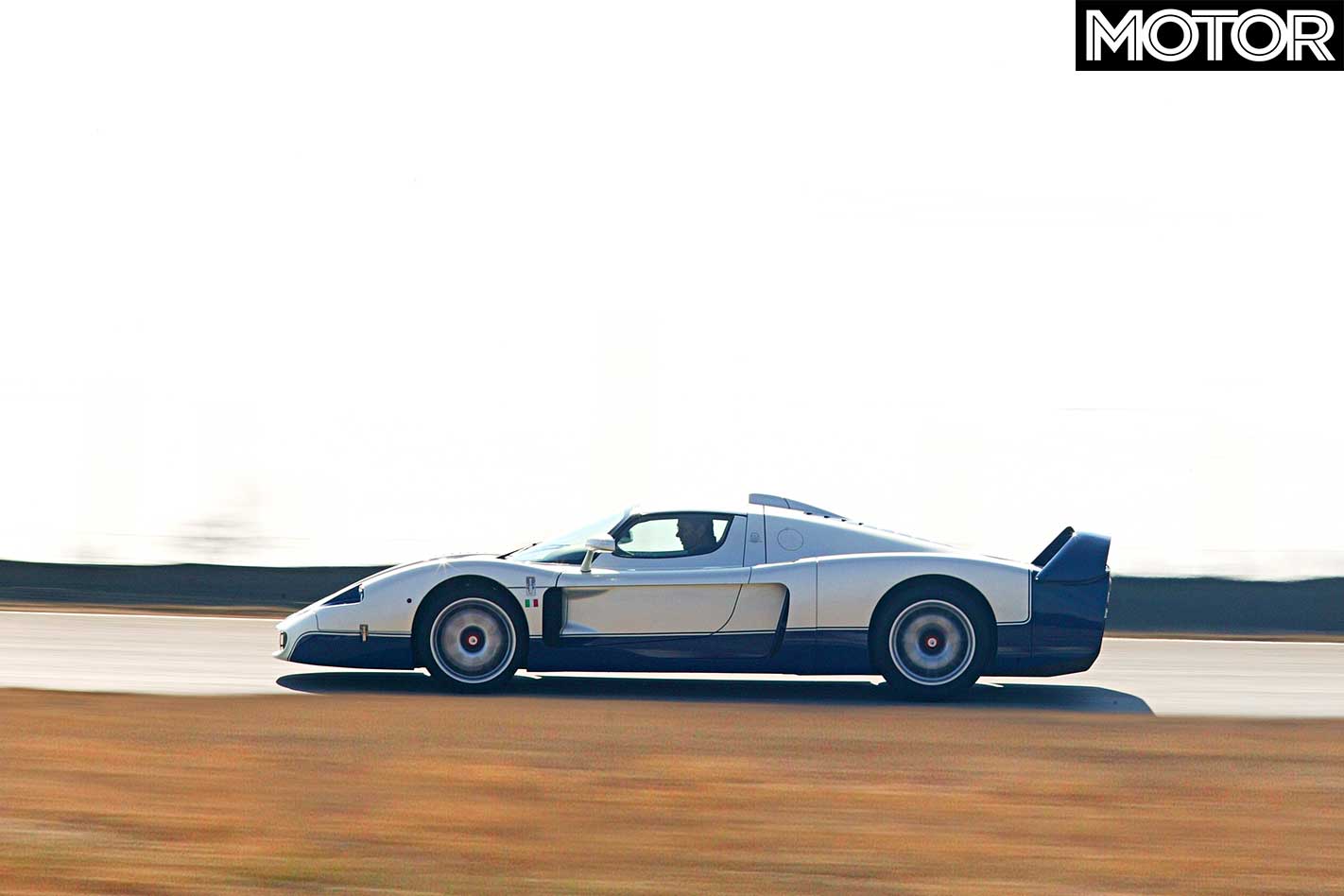
Dawdle out onto the track and ease some pressure onto the floor-hinged accelerator pedal, and the sensation of being in the middle of the machine’s doings becomes overwhelming.
The first leap of faith is a long, tight hairpin and, yep, if you keep pushing, you can overcome its mechanical grip, encouraging it to push gently at the nose. Ease off the throttle, though, and, waddya know, there’s no snap oversteer.
There’s no body roll either – it corners so unbelievably flat. It just tucks in and awaits further instruction. And it seems to have done it all before you’ve finished thinking about it. Hmm.
Then Balocco straightens up and there’s a penetrating, scraping chirp as the butterflies snap open on full throttle, a deep induction bwoart as the air screams in protest at being crammed into the intake just above your head. By then, there’s just too much going on. Too quickly. Limiter at 7800rpm, limiter, limiter and limiter again. About that fast.
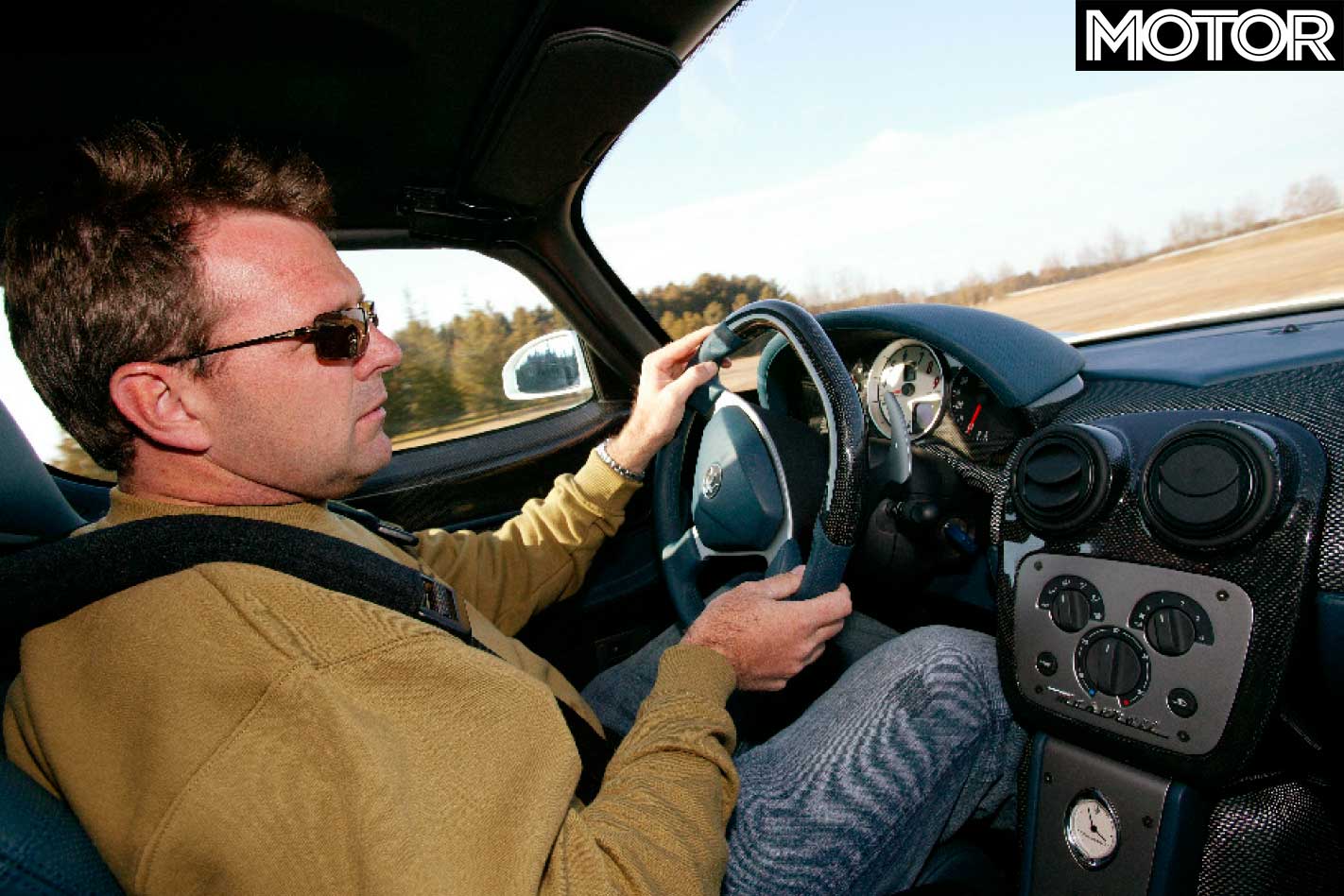
And it becomes clear that none of this astonishing specification is affectation. The standing 100km/h sprint takes 3.8secs, the quarter-mile just 11.3secs and the standing kay in 20 dead. And, impressive though they are, those numbers seem to do it no justice whatsoever.
Its best work arrives beyond 150 kays, and it screams from 100km/h to 200km/h in 6.1secs – or roughly what an SS Commodore can manage from 0-100km/h… And 200 to 300 is still under 13.
First gear is only a fleeting, brutal experience. Second gear, too, both of them done with within four seconds. Flap the paddle for a 250 millisecond, clanging flat-shift and third lasts bugger all longer. This short, narrow straight, no longer than the start-finish at Winton, sees 240km/h in fifth.

But the power and the speed aren’t the dominant parts of the big Maser. It’s incredibly quick in a straight line – but it bloody well ought to be at 1335kg for 600 old-fashioned horses.
The strange part of its engine performance is that it’s almost unfulfilling. The engine bwaps its way to the limiter with so much liberty and so much ease that it feels like it’s robbing you of at least 2000 revs. It’s an engine dominated by its torque curve like no other I’ve ever driven.
It’s got a power band, for sure, but it’s not that critical to the car’s character. That job’s taken by the torque wave that never stops, and is still the overwhelming power delivery characteristic even at the rev limiter.
It simply does not, ever, drop off the torque curve, and with no force-feeding in the 6.0-litre V12 (and despite its incredibly short stroke), its response is always synapsed.
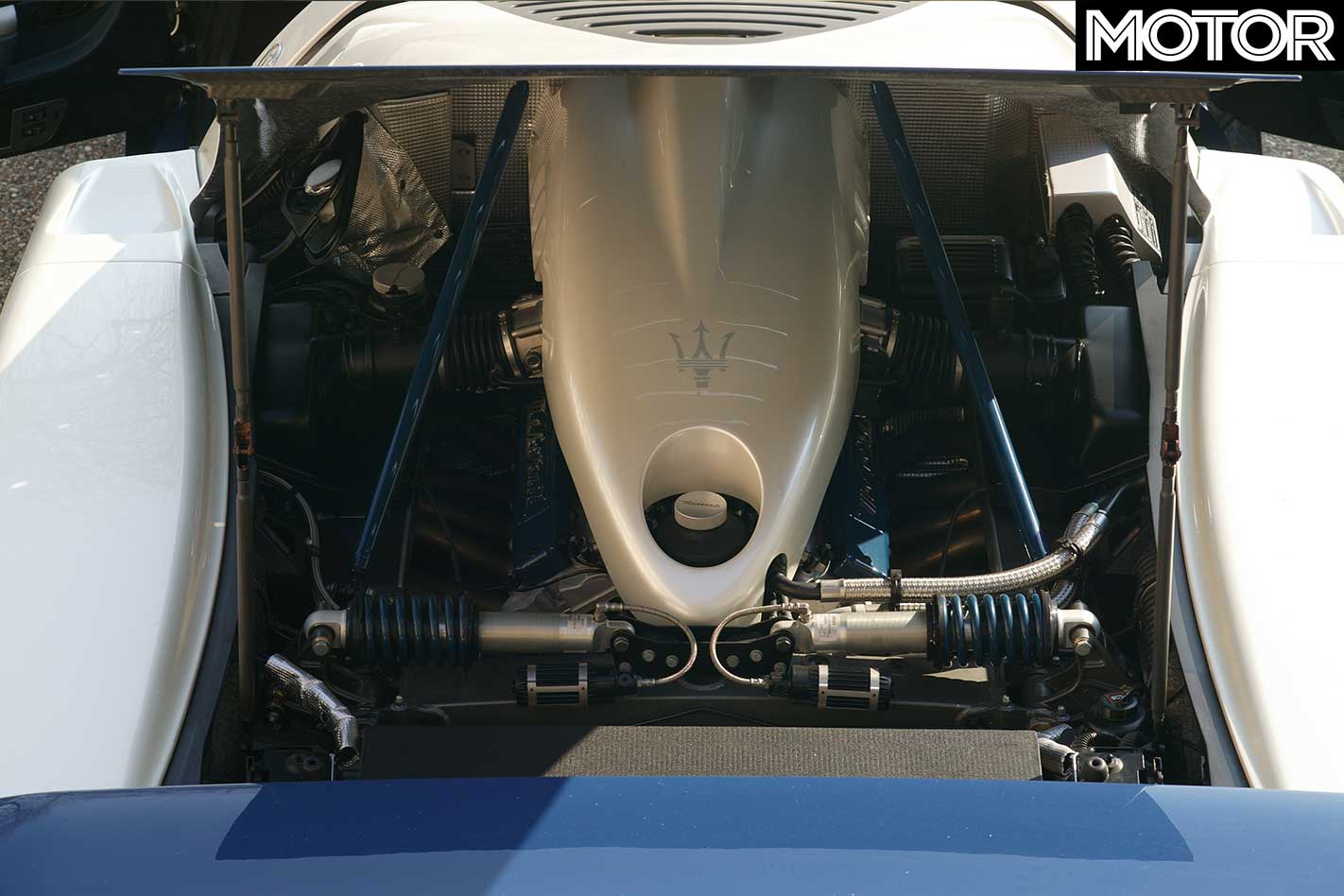
A couple of chicanes later and there’s a banked, very fast looking left hander. On the gun’s advice, it’s taken about 30km/h faster on turn-in than you would attempt in anything else. So, that’ll be 200km/h in fourth. And it does it so easily you find yourself standing on the floor-hinged throttle and then snapping fifth – at 215km/h – halfway through, without a wobble or a whinge.
Just as it is at low speed, the steering is fast and precise, though it wants badly for weight and feedback. For this style of car, it’s so light it feels almost insignificant and not in balance with the intensity of purpose that surrounds the rest of the car.
But that chassis just instils so much confidence, has so much grip that you pin it to the boards, almost involuntarily, just to see what’ll happen.
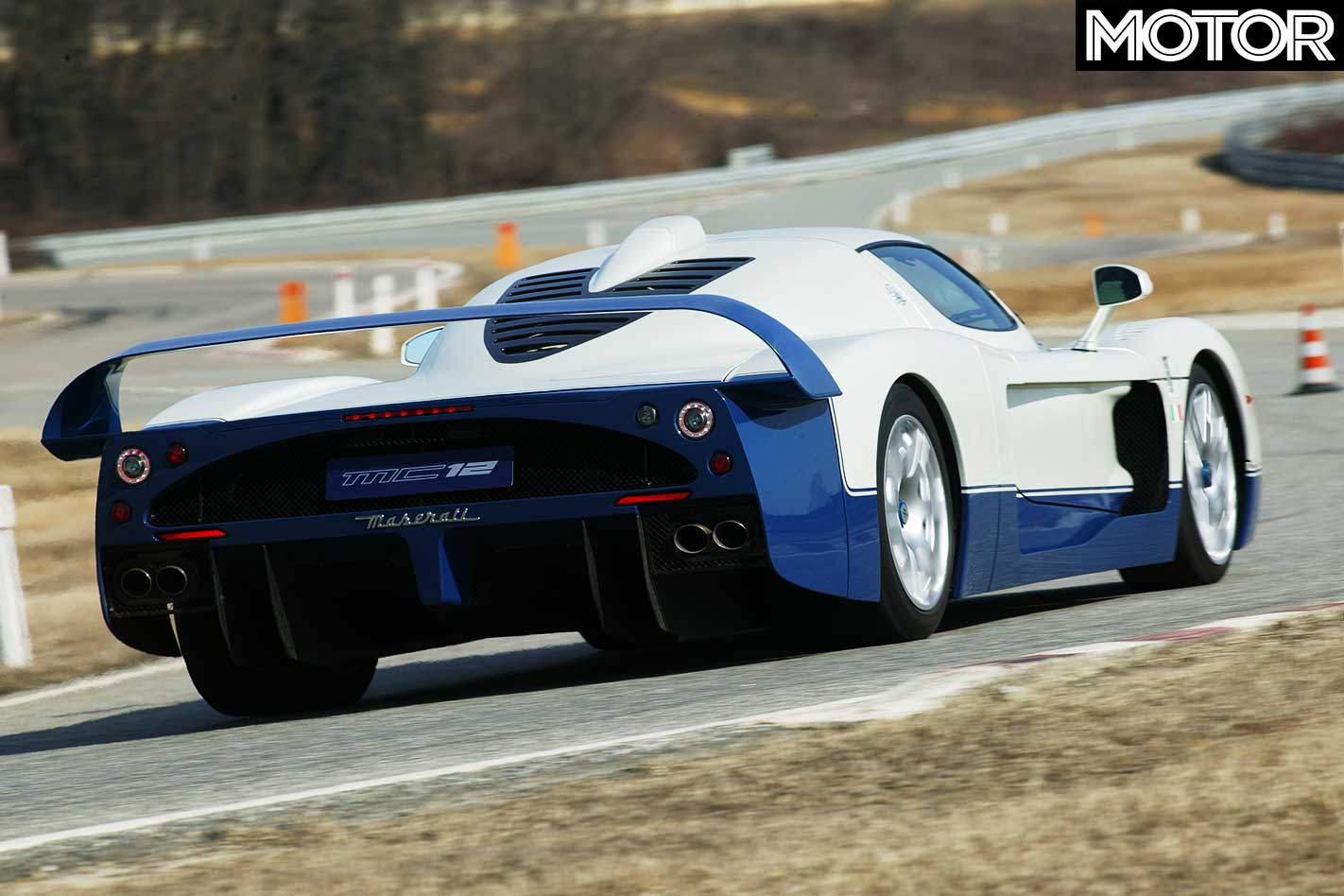
Aerodynamics is what’ll happen. There’s so much downforce, from the body, from the wing, from the enormous (and banned for racing) front and rear overhanging undertrays that you can feel it compressing the springs, especially at the back, and it wouldn’t matter what you did with the throttle, it ain’t going anywhere. Where the rear gets 59 percent of the car’s mass to cope with, at 200km/h it gets 66 percent of the downforce, just to ensure you get no nasty surprises at high speed.
Crack the throttle wide open, and it’s so stable the best you’ll get is a flicker from the ASR (traction control) light as it gives a bit of assistance. Doesn’t waver the engine note, mind you, and it walks away the instant its job is done.
So instead of being nasty, it falls, eventually and with the softest of transitions, into another gentle understeer, though this aero-bred understeer sings a completely different tune to its lower-speed mechanical counterpart.
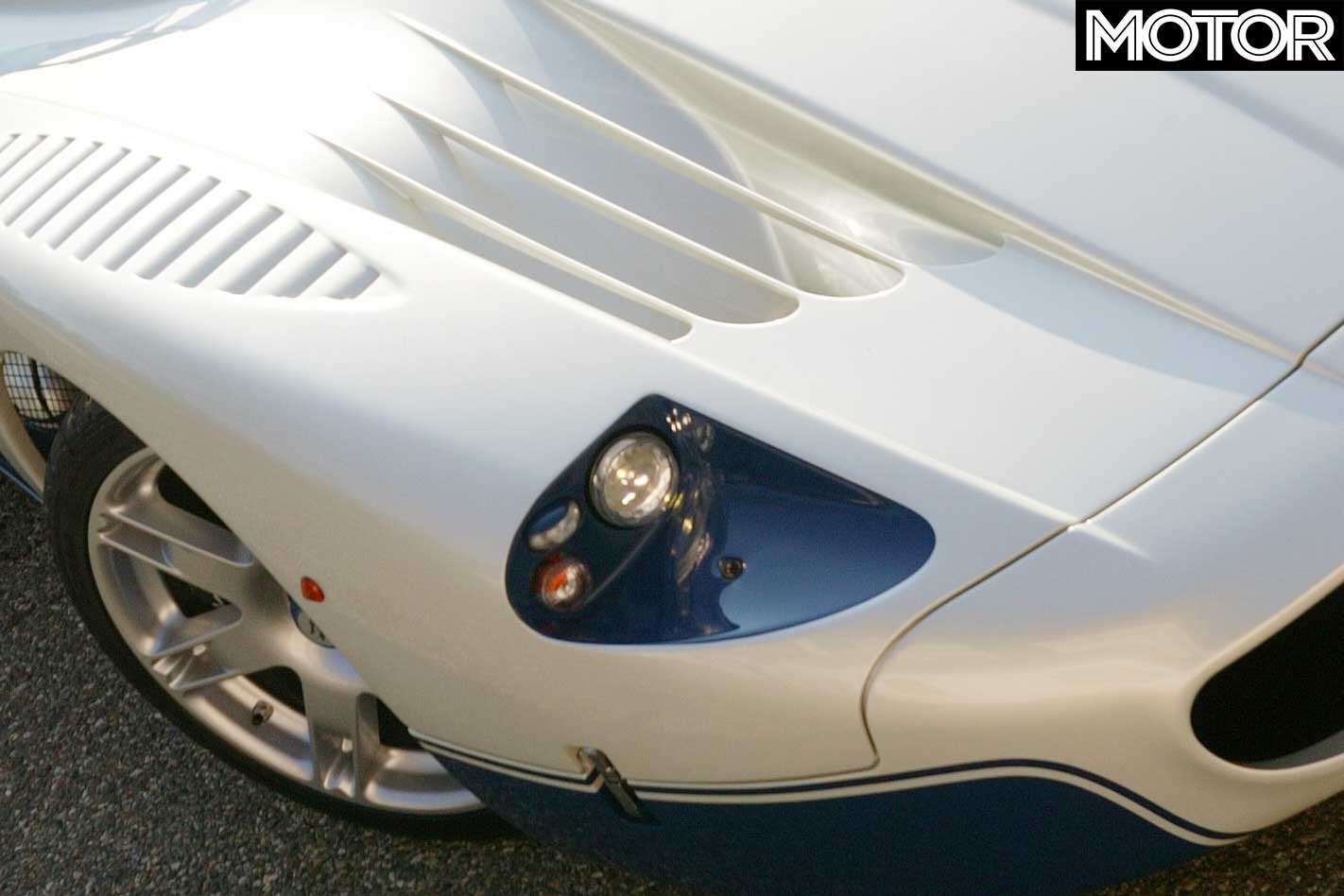
See, there’s a minor lightening of the steering and a fair bit of block squirm that characterises the front end’s low-speed behaviour. This time, at this speed, the tread pattern is being crushed into the marbly tarmac, the blocks feel more solid and there’s a far sharper reduction in its steering weight.
The thing is poised to the point of being ridiculous, and its suspension set-up is just exquisite, to the point that it rides bumps better than you imagine possible.
On sharp mid-corner hits it gives a little kickback in the steering and the tail gives a dull thud. Even at high speed, it just has a little rock on the progressive rate springs at the back.
Its only two significant shortcomings are its tyres and its brake pads, which faded significantly on what was essentially a race track exercise. In both instances, though, they are almost the only road-bred components of a pure, accurate, race-bred package and, as such, are bound to be the fuse points.
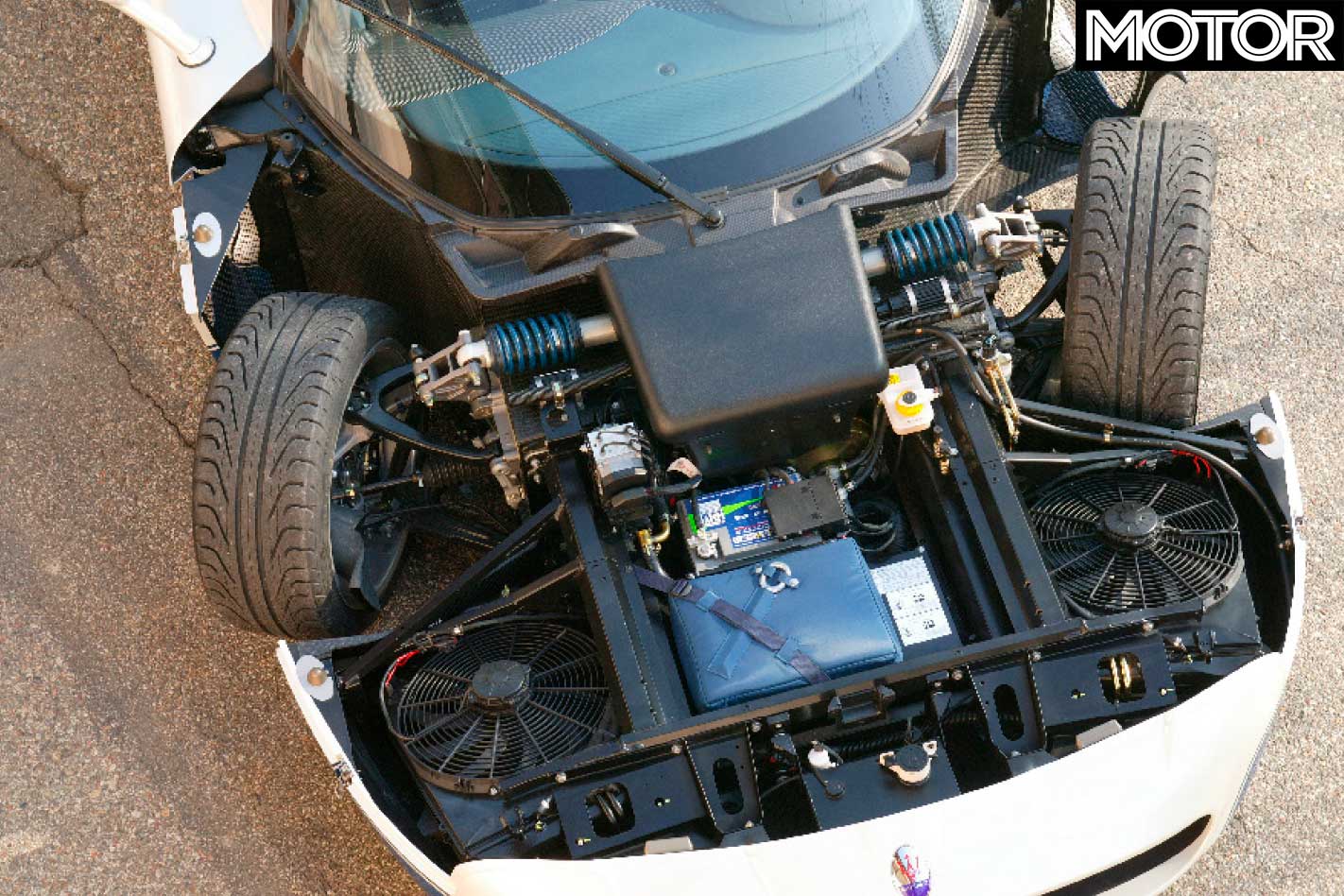
Stability is the key, whether it’s changing direction in a hurry for a chicane, working its arse hard over mid-corner (flat bit of the speed bowl) undulations at 260km/h, or sliding it in second gear for the camera.
No car has a right to be this blistering, this easily, and certainly not a road car. Not a race car either.
Is it too fast for the road? More than likely, to be honest, especially since the faster you drive it, the more it shines and the more it distances itself from almost anything else out there.

FAST FACTS 2005 Maserati MC12
BODY: 2-door, 2-seat coupe DRIVE: rear-wheel ENGINE: 6-litre, V12 DOHC 48v BORE/STROKE: 92mm x 75.2mm POWER: 465kW @ 7500rpm TORQUE: 652Nm @ 5500rpm WEIGHT: 1335kg POWER-TO-WEIGHT: 348kW/tonne TRANSMISSION: Six-speed sequential 0-100KM/H: 3.8sec 0-200KM/H: 9.9sec 0-400M: 11.3sec 0-1000M: 20.1sec SUSPENSION: double wishbones, pushrods, progressive rate horizontal dampers, coaxial coils (f & r) L/W/h: 5143/2096/1205mm WHEELBASE: 2800mm TRACK: 1660mm (f), 1650mm (r) BRAKES (f): 380mm x 34mm cross-drilled & ventilated rotors, six-piston calipers BRAKES (r): 335mm x 32mm cross-drilled & ventilated rotors, four-piston calipers WHEELS: 19 x 9.0-inch (f), 19 x 13-inch (r) TYRES: Pirelli PZero Corsa; 245/35 ZR19 (f), 345/35 ZR19 (r) PRICE: $1.8 million

